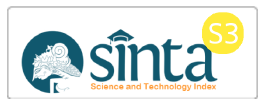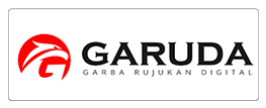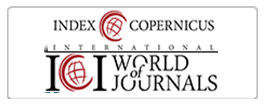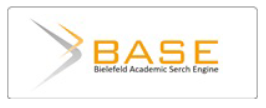Strategi Retorika Naratif Laporan Keberlanjutan Perusahaan Pertambangan
DOI:
https://doi.org/10.22219/jaa.v7i2.28842Keywords:
Aristotle, GRI, Rhetoric, SustainabilityAbstract
Purpose: to explore sustainability disclosures based on GRI and identify the narrative rhetoric of sustainability reports in coal mining companies in Indonesia.
Methodology/approach: content analysis method was used to identify 9 mining company sustainability reports during 3 years of observation. Data analysis through tracing the conformity of disclosures with GRI standards and identifying Aristotle's rhetoric, namely ethos, pathos and logos.
Findings: (environmental disclosure indicators are the most reported and the logos narrative rhetoric strategy is the most used in coal mining companies' sustainability reports.Practical and Theoretical contribution/Originality: mining companies can use GRI and Aristotelian rhetorical strategies. This research enriches the study of narrative accounting from the perspective of Aristotle's rhetorical theory
Research Limitation: the sample is limited to coal mining companies.
Downloads
References
Aho, J. A. (1985). Rhetoric and the Invention of Double Entry Bookkeeping. Rhetorica, 3(1), 21-43.
Allen, M. W., & Caillouet, R. H. (1994). Legitimation Endeavors: Impression Management Strategies Used by an Organization in Crisis. Communications Monographs, 61(1), 44-62.
Anggraeni, D. Y., & Djakman, C. D. (2018). Pengujian Terhadap Kualitas Pengungkapan CSR di Indonesia. EKUITAS (Jurnal Ekonomi dan Keuangan), 2(1), 22-41.
Aristotle, G. A. (1991). Aristotle on Rhetoric a Theory of Civic Discourse.
Assan, J. K., & Muhammed, A.-R. (2018). The Impact of Mining on Farming as a Livelihood Strategy and its Implications for Poverty Reduction and Household Well-Being in Ghana. International Journal of Development and Sustainability, 7(1), 1-20.
Boukes, M., & LaMarre, H. L. (2021). Narrative persuasion by corporate CSR messages: The impact of narrative richness on attitudes and behavioral intentions via character identification, transportation, and message credibility. Public Relations Review, 47(5), 102107.
Chariri, A. (2006). The dynamics of financial reporting practice in an Indonesian insurance company: a reflection of Javanese views of an ethical social relationship.
Chariri, A., & Nugroho, F. A. (2009). Retorika Dalam Pelaporan Corporate Social Responsibility: Analisis Semiotikatas Sustainability Reporting Pt Aneka Tambang Tbk.
Cheney, G., Christensen, L. T., Conrad, C., & Lair, D. J. (2004). Corporate Rhetoric as Organizational Discourse. The Sage handbook of organizational discourse, 79-103.
Clatworthy, M. A., & Jones, M. J. (2006). Differential patterns of textual characteristics and company performance in the chairman's statement. Accounting, Auditing & Accountability Journal.
Clementson, D. E. (2020). Narrative Persuasion, Identification, Attitudes, and Trustworthiness in Crisis Communication. Public Relations Review, 46(2), 101889.
Du, S., Bhattacharya, C. B., & Sen, S. (2010). Maximizing Business Returns to Corporate Social Responsibility (CSR): The Role of CSR Communication. International journal of management reviews, 12(1), 8-19.
Ekasari, K., Eltivia, N., Indrawan, A. K., & Miharso, A. (2021). Corporate Commitment of Environment: Evidence from Sustainability Reports of Mining Companies in Indonesia. Indonesian Journal of Sustainability Accounting and Management, 5(1), 1–10. https://doi.org/10.28992/ijsam.v5i1.164
Globalreporting.org. GRI G4 Versi Indonesia. 1. (2) GRI G4 Versi Indonesia | Daru Natta - Academia.edu
Green Jr, S. E. (2004). A Rhetorical Theory of Diffusion. Academy of management review, 29(4), 653-669.
Higgins, C., & Walker, R. (2012). Ethos, Logos, Pathos: Strategies of Persuasion in Social/Environmental Reports. Paper presented at the Accounting forum.
Hilson, G., Hilson, C. J., & Pardie, S. (2007). Improving awareness of mercury pollution in small-scale gold mining communities: challenges and ways forward in rural Ghana. Environmental Research, 103(2), 275-287.
Holt, R., & Macpherson, A. (2010). Sensemaking, Rhetoric and the Socially Competent Entrepreneur. International Small Business Journal, 28(1), 20-42.
Hossain, M., Islam, M., Momin, M. A., Nahar, S., & Alam, M. (2019). Understanding Communication of Sustainability Reporting: Application of Symbolic Convergence Theory (SCT). Journal of Business Ethics, 160(2), 563-586.
Initiative, G. R. (2009). Sustainability Reporting Guidelines and Mining and Metals Sector Supplement. Draft Sector Supplement for Public Comment.
Isafetymagazine.com. (2022, November 1). Pekerja Tambang Tewas Terlindas Saat Sedang Tertidur.1. https://isafetymagazine.com/pekerja-tambang-tewas-terlindas-saat-sedang-tertidur/
Iskandar, I. (2016). Pengaruh Penerapan Corporate Social Responsibility terhadap Profitabilitas Perusahaan. Paper presented at the Forum Ekonomi.
Kent, M. L. (2015). The Power of Storytelling In Public Relations: Introducing The 20 Master Plots. Public Relations Review, 41(4), 480-489.
Killian, S., & O'Regan, P. (2016). Social Accounting and the Co-Creation of Corporate Legitimacy. Accounting, Organizations and Society, 50, 1-12.
Kpan, J. D., Opoku, B. K., & Gloria, A. (2014). Heavy metal pollution in soil and water in some selected towns in Dunkwa-on-Offin District in the Central Region of Ghana as a result of small scale gold mining. Journal of Agricultural Chemistry and Environment, 3(02), 40.
KPMG. (2016). Adoption of Third Edition Corporate Governance Principles and Recommendations, KPMG.
Krippendorff, K. (2013). Content Analysis: An Introduction to Its Methodology. In Physical Review B (4th ed., Vol. 31, Issue 6). Sage Publications. https://doi.org/10.1103/PhysRevB.31.3460
LaMarre, H. L. (2016). Strategic Storytelling: Narrative Messaging in Entertainment and Emergent Media. In Strategic Communication (pp. 32-53): Routledge.
Lodhia, S. K. (2018). Mining and sustainable development: current issues: Routledge.
Napitupulu, D. B. (2014). Studi Validitas dan Realibilitas Faktor Sukses Implementasi e-Government Berdasarkan Pendekatan Kappa. Jurnal Sistem Informasi, 10(2), 70-74.
Nwagbara, U., & Belal, A. (2019). Persuasive Language of Responsible Organisation? A Critical Discourse Analysis of Corporate Social Responsibility (CSR) Reports of Nigerian Oil Companies. Accounting, Auditing & Accountability Journal.
Patnaik, S., Temouri, Y., Tuffour, J., Tarba, S., & Singh, S. K. (2018). Corporate Social Responsibility and Multinational Enterprise Identity: Insights from a Mining Company's Attempt to Localise in Ghana. Social Identities, 24(5), 604-623.
Pujiningsih, S., Prastiti, S. D., Syariati, D., & Yusuf, S. N. S. (2021). A Theoretical Explanation of Habitus Shifting in Hospitals Using Language and Symbolic Power of Accounting. J. Legal Ethical & Regul. Isses, 24, 1.
Pujiningsih, S., Suryani, A.W., Larasati, I.P. Yusuf, S. N. S. (2023). Political hegemony and accounting discourse: valuing nationalization. Asian Review of Accounting, 31(4), 559–582. https://doi.org/https://doi.org/10.1108/ARA-09-2022-0211
Raman, K. R. (2007). Community—Coca-Cola Interface: Political-Anthropological Concerns on Corporate Social Responsibility. Social Analysis, 51(3), 103-120.
Sakina, D. A., Wahyuni, N. I., & Mas' ud, I. (2014). Narsisme Dalam Pelaporan Corporate Social Responsibility: Analisis Semiotik Atas Sustainability Reporting PT. Kaltim Prima Coal Dan PT. Perkebunan Nusantara XIII (Persero). e-Journal Ekonomi Bisnis dan Akuntansi, 1(1), 32-41.
Scott, L. M. (1994). Images in advertising: The need for a theory of visual rhetoric. Journal of consumer research, 21(2), 252-273.
Thompson, G. (1991). Is Accounting Rhetorical? Methodology, Luca Pacioli and Printing. Accounting, Organizations and Society, 16(5-6), 572-599.
Young, J. J. (2003). Constructing, Persuading and Silencing: The Rhetoric of Accounting Standards. Accounting, Organizations and Society, 28(6), 621-638.
Zhao, X., Zhan, M., & Jie, C. (2018). Examining Multiplicity and Dynamics of Publics’ Crisis Narratives with Large-scale Twitter Data. Public Relations Review, 44(4), 619-632.
Downloads
Published
Issue
Section
License
Copyright (c) 2024 Lala Anggun Putri Wandira, Sri Pujiningsih

This work is licensed under a Creative Commons Attribution-NonCommercial-ShareAlike 4.0 International License.
Jurnal Akademi Akuntansi is licensed under a Creative Commons Attribution-NonCommercial-ShareAlike 4.0 International License.
Authors who publish with this journal agree to the following terms:
- Authors retain copyright and grant the journal right of first publication with the work simultaneously licensed under a Creative Commons Attribution-NonCommercial-ShareAlike 4.0 International License that allows others to share the work with an acknowledgment of the work's authorship and initial publication in this journal.
- Authors are able to enter into separate, additional contractual arrangements for the non-exclusive distribution of the journal's published version of the work (e.g., post it to an institutional repository or publish it in a book), with an acknowledgment of its initial publication in this journal.
- Authors are permitted and encouraged to post their work online (e.g., in institutional repositories or on their website) prior to and during the submission process, as it can lead to productive exchanges, as well as earlier and greater citation of published work (See The Effect of Open Access).
Jurnal Akademi Akuntansi dilisensikan di bawah lisensi Creative Commons Attribution-NonCommercial-ShareAlike 4.0 International.
Penulis yang menerbitkan artikel di jurnal ini menyetujui ketentuan berikut:
- Penulis mempertahankan hak cipta dan memberikan hak jurnal atas publikasi pertama dengan karya yang secara serentak dilisensikan di bawah Lisensi Pengaitan Creative Commons yang memungkinkan orang lain untuk berbagi karya dengan pengakuan atas karya penulis dan publikasi awal dalam jurnal ini.
- Penulis dapat masuk ke dalam pengaturan kontrak tambahan yang terpisah untuk distribusi non-eksklusif versi karya jurnal yang diterbitkan (misalnya, mempostingnya ke repositori institusional atau mempublikasikannya dalam sebuah buku), dengan pengakuan publikasi awalnya di jurnal ini.
- Penulis diizinkan dan didorong untuk memposting pekerjaan mereka secara online (misalnya, di repositori institusional atau di situs web mereka) sebelum dan selama proses pengajuan, karena dapat mengarah pada pertukaran produktif, serta kutipan pekerjaan sebelumnya dan yang lebih besar (Lihat Pengaruh Akses Terbuka).























